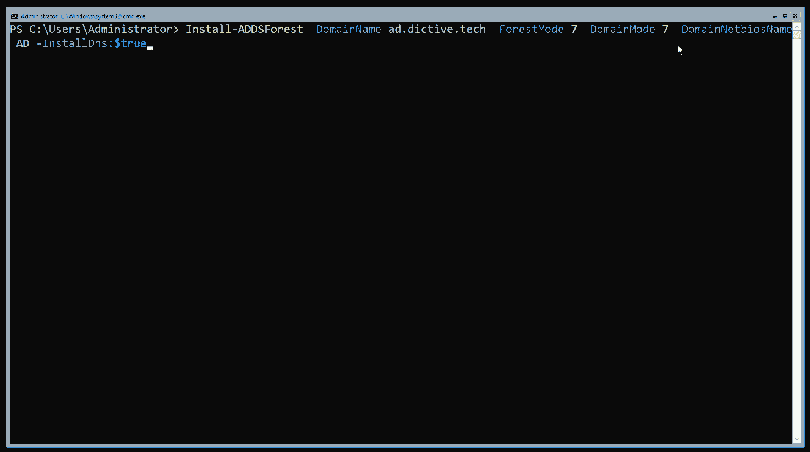Whether you're trying to configure a new active directory Forest and Domain on Windows Server Core, or you just want to use Powershell instead of the 'Install Roles' GUI, you're in the right place. This short guide will show you how to create a new Forest & Domain faster than if you were trying to use the GUI.
Windows Server Core is a slimmed-down version of Windows Server, and as such, it requires fewer resources to run, as well as presenting a much smaller attack surface (in regards to security).
Server Configuration
First, we need to make sure we have some basic things set. We'll do this from the server config window (sconfig) which opens by default now on Server 2022. For older versions, run sconfig.
- Hostname - exceptionally important. This will be the name of your domain controller.
dc01is a boring, but fine choice. - Date and time. Make sure the date/time is correct and set your timezone.
- IP and DNS. Make sure you have a static IP set. We're also installing the domain DNS service, and we can't have a DNS server running with a dynamic IP. Only set one DNS server, and set it to itself.
- Enable remote desktop. Optional. Useful for management.
Install the Feature

Exit from sconfig to the command prompt. Server 2022 defaults to powershell. If you end up somewhere else, enter into a powershell prompt with powershell.
Enter the command below:
Install-WindowsFeature AD-Domain-ServicesOptional things here: –IncludeManagementTools, -Verbose
The management tools might be a valid option if you're installing via Powershell on a Server with GUI, but we don't need this on our Server Core installation. We'll install management tools on a client machine in future.
It's a fairly short installation, so -Verbose is probably not necessary.
Install the Forest
Now we install the new Forest, and therefore, our domain, using the Install-ADDSForest cmdlet. We specify the -DomainName, in this case, I'm using a subdomain of ad, which is fairly common. Equally common would be using a subdomain of 'corp'. Because we're installing a new forest, we've set the -ForestMode and -DomainMode to the same level of 7, which is the current latest domain and forest functional level: Server2016.
The -DomainNetbiosName is the first part of the domain. If you chose just 'example.com', the netbios name would be 'EXAMPLE'. In our case, it's the sub-domain part: 'AD'. Finally, -InstallDns:$true says that we want to install the DNS service. The complete command looks like:
Install-ADDSForest -DomainName ad.dictive.tech -ForestMode 7 -DomainMode 7 -DomainNetbiosName AD -InstallDns:$true-DatabasePath "path", -SysvolPath "path", -LogPath "path"
Once you run this, you'll be prompted for a SafeModeAdministratorPassword. This can be the same as the administrator password but it's worth knowing what the safe mode password is for: If you ever need to use directory services restore mode, or start the DC in safe mode, you will need this password.
Enter the SMAP, and you'll be presented with the final opportunity to cancel the process: "The target server will be configured as a domain controller and restarted when this operation is complete. Do you want to continue with this operation?"
ad subdomain. Here's how to fix that error.Say yes to this, and watch the progress. It will throw some warnings, but as this is a new domain/forest, we can safely ignore them.

Once it has finished, it will automatically restart the server and can take some time to continue configuring/applying some group policy stuff after boot. After a little patience, you'll be able to login to your brand new domain controller!
That's it! You've created a new Windows Forest & Domain, and can now start adding users, hosts and DNS records.
